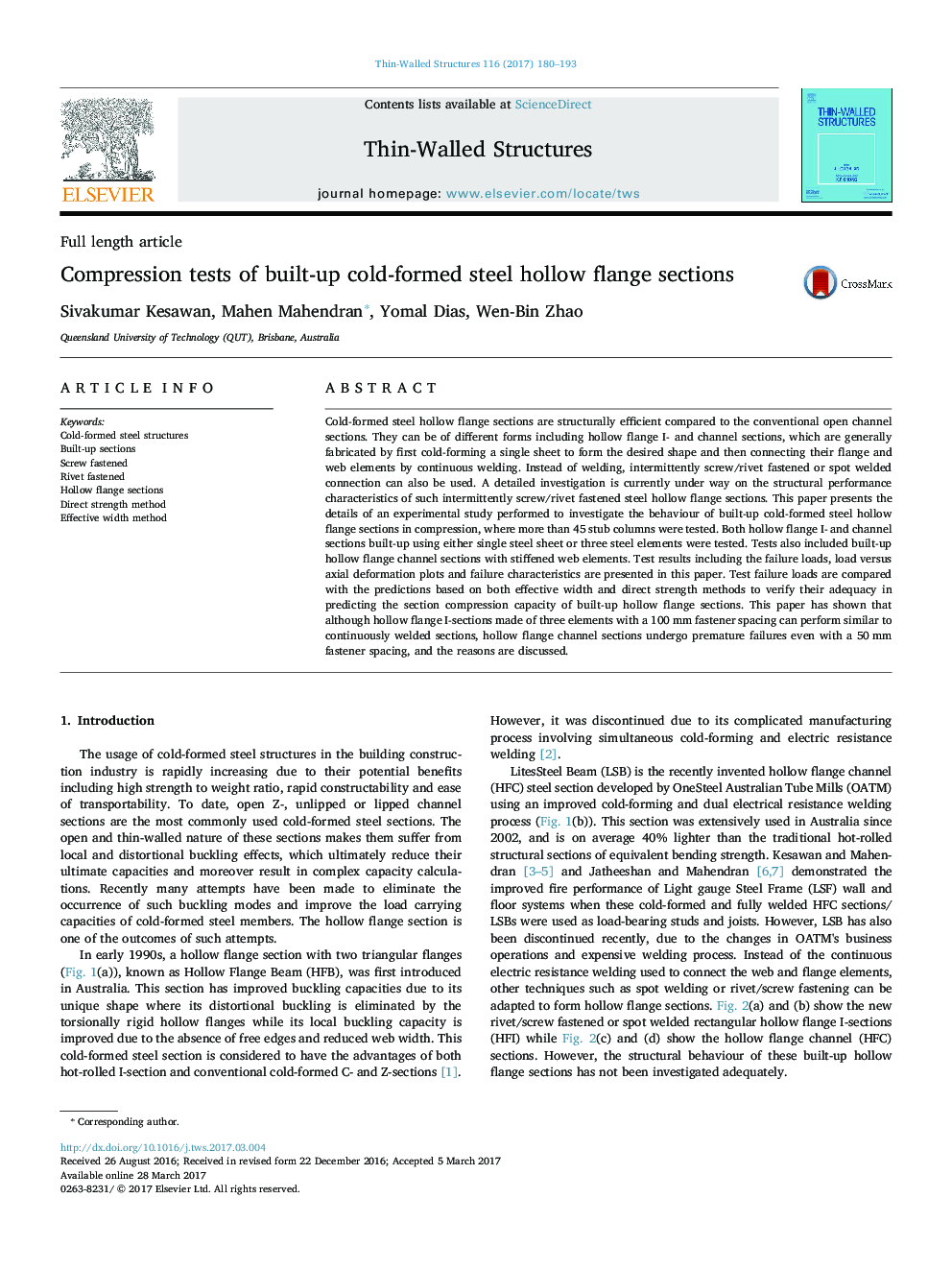| Article ID | Journal | Published Year | Pages | File Type |
|---|---|---|---|---|
| 4928599 | Thin-Walled Structures | 2017 | 14 Pages |
Abstract
Cold-formed steel hollow flange sections are structurally efficient compared to the conventional open channel sections. They can be of different forms including hollow flange I- and channel sections, which are generally fabricated by first cold-forming a single sheet to form the desired shape and then connecting their flange and web elements by continuous welding. Instead of welding, intermittently screw/rivet fastened or spot welded connection can also be used. A detailed investigation is currently under way on the structural performance characteristics of such intermittently screw/rivet fastened steel hollow flange sections. This paper presents the details of an experimental study performed to investigate the behaviour of built-up cold-formed steel hollow flange sections in compression, where more than 45 stub columns were tested. Both hollow flange I- and channel sections built-up using either single steel sheet or three steel elements were tested. Tests also included built-up hollow flange channel sections with stiffened web elements. Test results including the failure loads, load versus axial deformation plots and failure characteristics are presented in this paper. Test failure loads are compared with the predictions based on both effective width and direct strength methods to verify their adequacy in predicting the section compression capacity of built-up hollow flange sections. This paper has shown that although hollow flange I-sections made of three elements with a 100Â mm fastener spacing can perform similar to continuously welded sections, hollow flange channel sections undergo premature failures even with a 50Â mm fastener spacing, and the reasons are discussed.
Related Topics
Physical Sciences and Engineering
Engineering
Civil and Structural Engineering
Authors
Sivakumar Kesawan, Mahen Mahendran, Yomal Dias, Wen-Bin Zhao,
